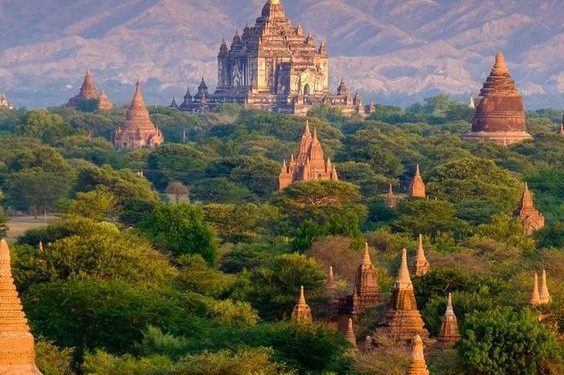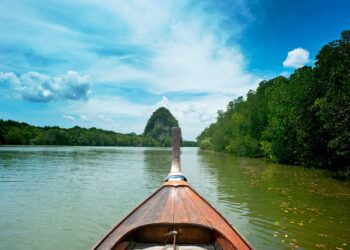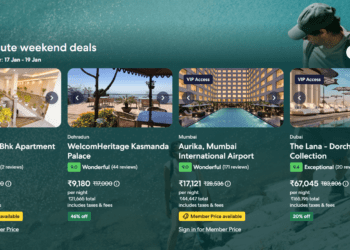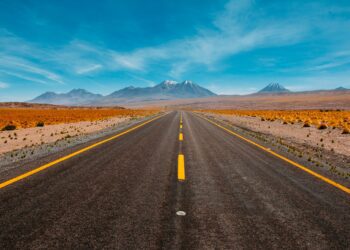Welcome to the land of contrasts, where ancient traditions and modern innovations meet. Asia is a captivating continent that has captured the hearts of travelers far and wide. From bustling cities to tranquil temples, stunning beaches to snow-capped mountains, there’s something for everyone in Asia. But beyond the well-known tourist hotspots lies a world of hidden gems waiting to be discovered – the best kept secrets of Asia that only locals and savvy travelers know about! In this featured destination guide, we’ll take you on a journey through the rich history, diverse culture, stunning geography and vibrant life of Asia’s most underrated destinations. So buckle up adventurer – it’s time to explore!
What is Asia?
Asia is the largest continent in the world, covering nearly one-third of the Earth’s total land area. It consists of 48 countries and encompasses a vast array of cultures, languages, religions and histories.
The region is bordered by the Pacific Ocean to the east, the Arctic Ocean to the north and stretches all the way to Europe in its western borders. Home to some of world’s most populous countries such as China and India, Asia also boasts diverse landscapes ranging from tropical rainforests to arid deserts.
Historically speaking, Asia has been home to many ancient civilizations including those of Mesopotamia, Indus Valley and Han dynasty China. Today it remains a melting pot of different cultures that have evolved over thousands of years.
Asia has become an increasingly popular destination for travelers seeking adventure or cultural immersion. From street food markets in Bangkok to sacred temples hidden deep within mountainsides – there are endless experiences waiting for you here!
The Best Kept Secrets of Asia
Asia is a vast continent filled with stunning landscapes, diverse cultures and hidden gems waiting to be discovered. Some of the best-kept secrets in Asia are often overshadowed by popular tourist destinations but offer unique experiences for travelers seeking adventure.
For nature lovers, head to the Kamchatka Peninsula in Russia where you can witness active volcanoes, natural hot springs and rare wildlife such as brown bears and Steller’s sea eagles. Another hidden gem is Nusa Penida in Indonesia which offers breathtaking views of turquoise waters, towering cliffs and secluded beaches.
If you’re looking for cultural immersion, visit Bhutan – known as the “Land of Happiness” – where traditional dress is still worn daily and Gross National Happiness takes precedence over GDP. Or explore the lesser-known regions of Myanmar such as Hpa-An which boasts limestone caves filled with Buddhist art or trek through Chin State to see ancient tattoo-faced tribes.
Foodies will love exploring off-the-beaten-path culinary delights such as street food stalls in Bangkok’s Chinatown or sampling Uzbekistan’s savory plov dish. These best-kept secrets may require some extra effort to reach but provide unforgettable experiences that will make your trip truly memorable.
The History of Asia
Asia has a rich and diverse history that dates back to ancient times. It is home to some of the world’s oldest civilizations, such as Mesopotamia, Indus Valley, and China. The early inhabitants of Asia were nomadic tribes who roamed across the vast continent.
In the 6th century BCE, Buddhism was introduced in India by Siddhartha Gautama (the Buddha), which then spread throughout other parts of Asia. In addition to religion, many empires also rose and fell throughout Asian history.
One notable empire was the Mongol Empire founded by Genghis Khan in the 13th century CE. It became one of the largest contiguous empires in history and had a significant impact on Asian culture and politics.
The Age of Exploration brought European powers to Asia in search for trade opportunities resulting in colonization and exploitation. Japan emerged as a major power after defeating Russia during Russo-Japanese War (1904-1905) becoming an imperialist country leading up into World War II.
Today, Asia continues its growth with advancements in technology while still preserving its unique cultural heritage from centuries ago.
Geography of Asia
The geography of Asia is as diverse as its cultures and people. This continent is the world’s largest, covering 30% of Earth’s land area and home to over 4 billion people. It spans across multiple climatic zones from the frozen tundra in Siberia to the tropical rainforests in Southeast Asia.
Asia has a varied landscape that includes mountains, valleys, plateaus, deserts, and coastal plains. The Himalayan mountain range runs through Nepal, Bhutan, India, Pakistan and China with Mount Everest being its highest peak at 29,029 feet above sea level.
The Gobi Desert stretches across northern China and southern Mongolia while the Arabian Peninsula features vast expanses of sandy desert. The Mekong River flows through six countries including Vietnam which also boasts Ha Long Bay – one of Asia’s most famous natural wonders.
In addition to its many beautiful landscapes and landmarks, Asia is also known for its numerous earthquakes due to its location on the Pacific Ring of Fire – an active region where several tectonic plates meet causing volcanic eruptions and seismic activity.
Asia’s geography offers a wide range of climates and breathtaking natural beauty making it an attractive destination for travelers seeking adventure or relaxation alike.
Language of Asia
One of the fascinating aspects of Asia is its diverse range of languages. With over 2,300 different languages spoken across this vast continent, it’s a linguistic melting pot unlike any other.
Chinese and Hindi are two of the most widely spoken languages in Asia, but there are also countless smaller regional dialects that vary from country to country. For example, Japan alone has several distinct dialects that can be difficult for even native Japanese speakers to understand.
In addition to spoken languages, many Asian countries also have their own unique writing systems. Chinese characters have been used for thousands of years and remain a prominent form of written communication in China and other East Asian countries.
However, despite these differences in language and writing systems, English has become increasingly prevalent as a second language throughout Asia. Many schools now teach English as part of their curriculum in an effort to prepare students for global communication and business opportunities.
The language diversity found within Asia is just one more reason why it’s such an intriguing destination worth exploring.
Religion in Asia
Religion in Asia is a complex and diverse topic, as the continent is home to multiple religions including Hinduism, Buddhism, Islam, Christianity and many more. Each religion has its own unique beliefs and practices that have been shaped over centuries of history.
Hinduism is one of the oldest religions in Asia with roots dating back thousands of years. It is practiced predominantly in India and Nepal where it plays a significant role in shaping their culture.
Buddhism originated in India but later spread to other parts of Asia such as China, Japan, Korea, Vietnam among others. It emphasizes on self-awareness and achieving enlightenment through meditation and mindfulness.
Islam was introduced to Asia during the seventh century when Arab traders arrived on its shores. Today it’s widely practiced across the continent with Indonesia being home to the largest number of Muslims globally.
Christianity also has a significant presence in most Asian countries especially Philippines which have embraced it since Spanish colonization several centuries ago.
Religion plays an important role in shaping Asian cultures regardless of diversity or differences between each country’s religious beliefs.
The Culture of Asia
The culture of Asia is one of the most diverse and vibrant in the world. It encompasses a wide range of traditions, customs, and beliefs that have been shaped by thousands of years of history.
From the colorful festivals in India to the tea ceremonies in Japan, each country has its unique cultural practices that make it stand out from others. The Chinese calligraphy, martial arts, and paper cutting are just some examples that showcase their rich heritage.
Religion plays a crucial role in shaping Asian cultures as well. Buddhism is widely practiced across Southeast Asia while Hinduism dominates India’s religious landscape. Islam also thrives throughout Central Asia and parts of Southeast Asia.
Family values are highly regarded across many Asian societies where respect for elders is paramount. Filial piety is another important aspect where children show reverence to their parents through acts like taking care of them during old age.
Asian cuisine boasts an array of flavors that tickle taste buds with every bite— from spicy curries to savory dumplings served with soy sauce or chili oil dip. Food preparation techniques vary from country to country but usually involve fresh ingredients combined with traditional spices and herbs such as coriander, ginger root, lemongrass, among others.
Exploring different aspects of Asian culture can be fascinating because they offer a glimpse into ancient traditions mixed with modern innovations; however there’s much more to uncover beyond these generalizations!
Economy of Asia
The economy of Asia is one of the fastest-growing in the world. The region has been able to make significant progress over the years, thanks to its abundant natural resources and a booming manufacturing industry. Asian economies are characterized by their diversity, ranging from highly developed countries such as Japan and South Korea to emerging markets like Vietnam and Indonesia.
One of the key drivers of economic growth in Asia is trade. The region accounts for more than 60% of global trade, with China being the largest trading nation in the world. In addition, many Asian countries have implemented policies that encourage foreign investment, leading to an influx of capital into these markets.
With such a vast and diverse range of economies across Asia comes different levels of prosperity among nations. Some countries, particularly those with strong industrial sectors like Japan or South Korea enjoy high standards-of-living while others face poverty rates above 20%.
However, despite facing various economic challenges such as corruption issues or income inequality which may hinder further development; several innovative solutions were formulated regarding e-commerce boom (such as Alibaba), green energy initiatives (such as Masayoshi Son’s Softbank) or digital finance adoption -all partaking in shaping tomorrow’s Asia economy.
In conclusion: From agriculture-based economies to tech-driven giants – every country across Asia presents itself with unique opportunities for investors to explore.
Life in Asia Today
Life in Asia today is a vibrant mix of tradition and modernity. The continent has experienced rapid economic growth in recent years, with countries like China, Japan, and South Korea leading the way. But despite this progress, many parts of Asia remain steeped in ancient customs and practices.
In cities like Tokyo, Seoul, Shanghai, and Bangkok you’ll find towering skyscrapers alongside centuries-old temples. You can indulge your taste buds with both local street food as well as international cuisines from around the world.
Asia is also home to stunning natural landscapes that attract visitors from all over the globe: beaches fringed by palm trees in Thailand; snow-capped peaks in Nepal; lush rainforests teeming with wildlife in Indonesia.
Whether you’re interested in exploring bustling metropolises or getting back to nature, Asia has something for everyone. So why not start planning your next adventure to discover the best kept secrets of this amazing continent?




















